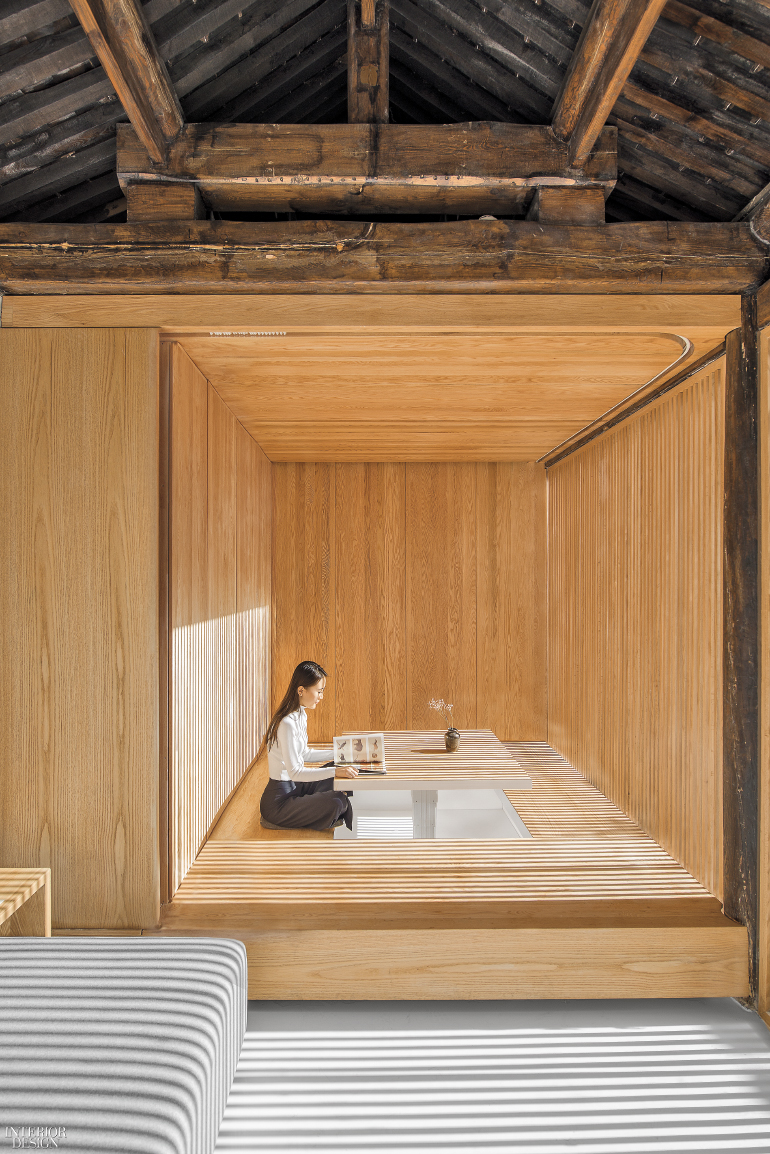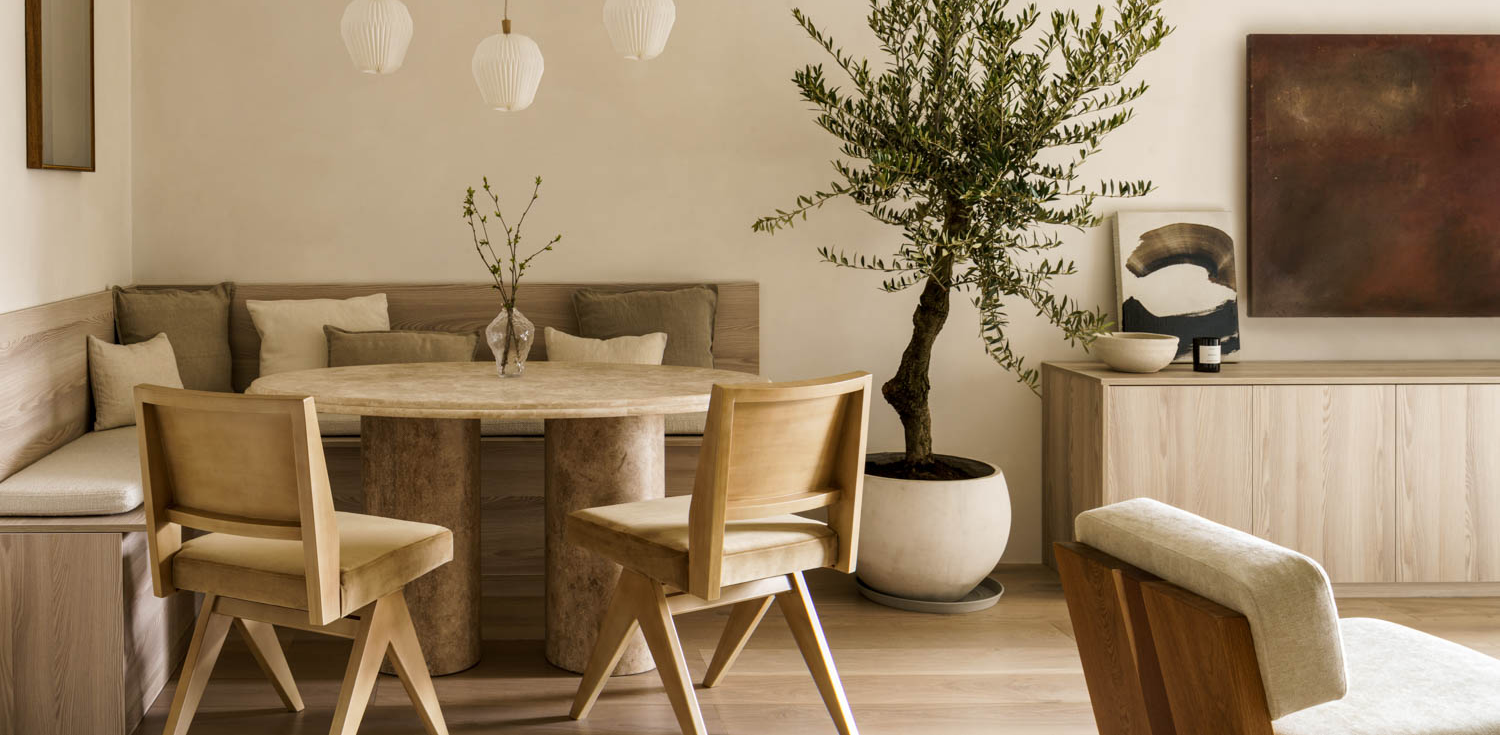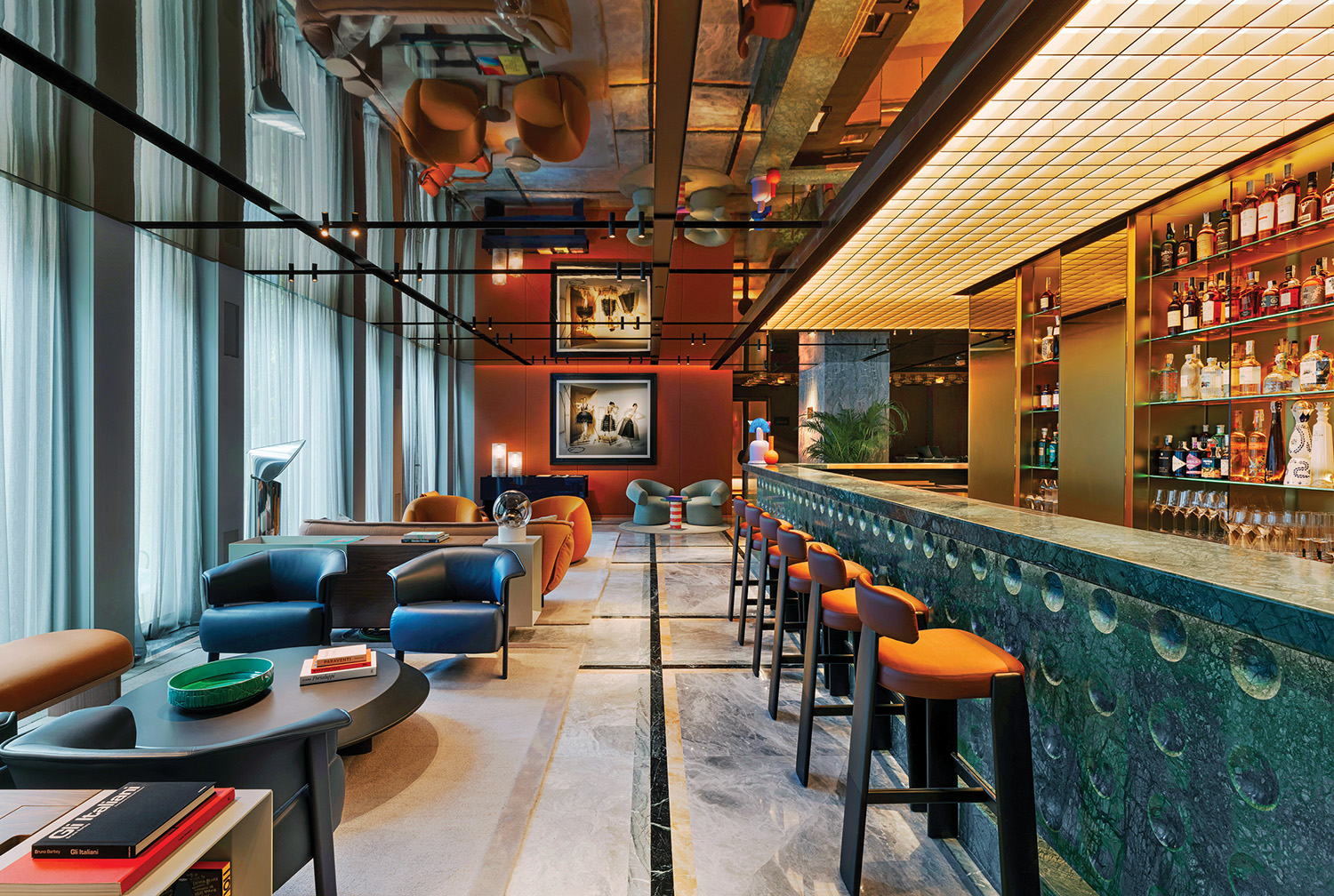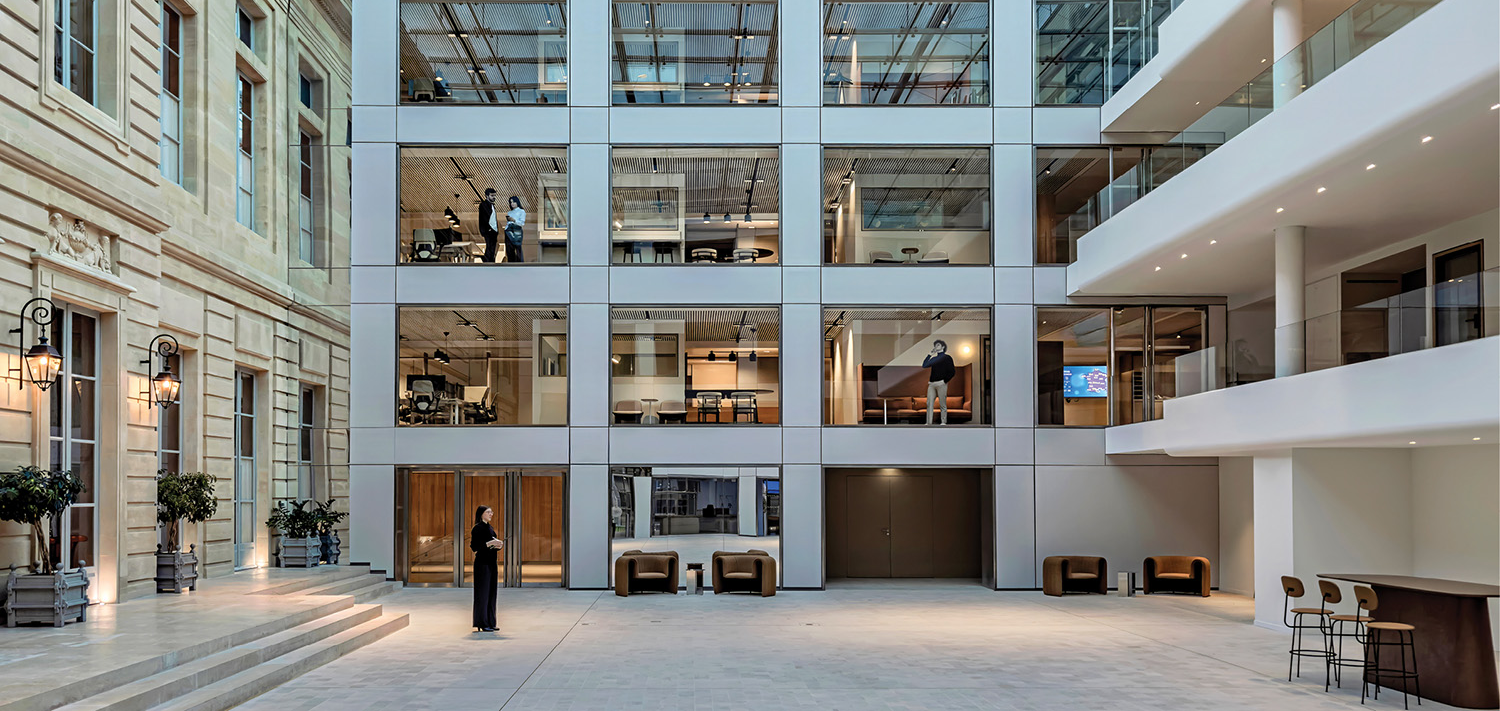Hutel Twisting Courtyard by Archstudio: 2017 Best of Year Winner for Coffee/Tea
To know the siheyuan is to know China’s capital well. An elemental building block of historic hutong neighborhoods, these centuries-old courtyard-style compounds were conceived to accommodate an extended family. They therefore encompass a main house in front, two “side houses,” and a rear “opposite house,” all surrounding a garden crisscrossed by decorative pathways.

In the city’s design-centric Dashilar quarter, one siheyuan—while continuing to represent traditional Chinese culture—has simultaneously been appropriated as a vision of change. Renovated by principal Han Wenqiang, what was once a single-story residence has become a rental property that can be booked for corporate retreats, business meetings, or overnight stays. The titular twist is a ribbon of gray epoxy-finished pavers that wends its way through the courtyard, peeling up here and there to form sloping walls and roofs of various rooms, including the kitchen in white-on-white solid-surfacing. “The design explores the relationship between courtyard and architecture,” Han says.

Throughout the 1,730-square-foot interior, clever built-ins that he calls “embedded furniture systems” allow spaces to morph from tearoom to bedroom and back again. Each of the two side-house suites features an oak-clad niche containing a motorized dining table, which lowers flush to the floor, and a hideaway futon-style mattress, so guests can sip Oolong by day… and slumber by night.
Project Architect: Huang Tao.


> See more from the December 2017 issue of Interior Design
> See all 2017 Best of Year winners and honorees


